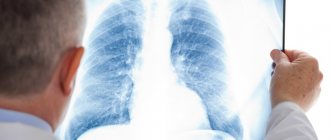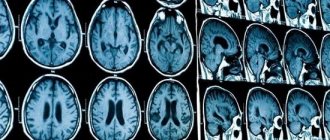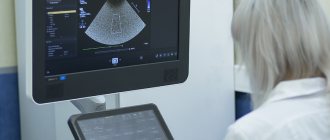Pneumonia is an acute infectious disease of the lower respiratory tract. Pneumonia or pneumonia is a common pathology, the development of which is caused by the activity of microorganisms.
Atypical pneumonia is a form of pneumonia in which the pathological process develops under the influence of atypical pathogens. In this case, the patient exhibits signs that are uncharacteristic of this disease. Atypical pneumonia is caused by mycoplasma, legionella or chlamydia. An inflammatory process in the lungs, if untreated or poorly treated, can cause serious harm to health.
You can undergo examination and receive treatment for pneumonia at the Yusupov Hospital. The clinic’s doctors follow European recommendations for the treatment of this disease and prescribe modern drugs registered in the Russian Federation to patients. To improve the patient’s condition and his recovery, rehabilitation doctors are developing a set of unique measures.
The Yusupov Hospital employs candidates and doctors of medical sciences with knowledge and experience in the treatment of atypical pneumonia. They take an individual approach to the selection of drugs for combination therapy. Patients with severe atypical pneumonia are hospitalized around the clock in the intensive care unit. Resuscitation doctors monitor their condition using modern cardiac monitors. Oxygen is supplied centrally to each room. Artificial ventilation is performed using expert-class devices.
Features of the disease
Atypical pneumonia has an acute onset of symptoms. This type of pneumonia is being actively studied by pulmonologists, since this term appeared in medicine relatively recently - in the early 30s of the 20th century. Atypical pneumonia is common among young people, and the pathological process can also develop in children.
One of the tasks that modern pulmonologists solve is the selection of effective drugs that suppress the activity of viruses and bacteria. When prescribing therapeutic measures, pulmonologists use clinical recommendations for the treatment of atypical pneumonia.
The range of treatment measures prescribed to patients at the Yusupov Hospital depends on many factors, one of which is the staged nature of the process. It has been revealed that the development of atypical pneumonia occurs in several stages:
- The incubation period lasts from the moment the pathogen enters the body and the first signs of the disease appear. The average duration of this period is 8 days;
- the period of precursors lasts up to 3 days. The patient develops signs of respiratory diseases that are not specific to pneumonia;
- the period of the height of the disease is characterized by the appearance of an inflammatory process in the lungs;
- The period of convalescence is characterized by a decrease in the inflammatory process and normalization of the patient’s condition.
Treatment of atypical pneumonia in adults at the Yusupov multidisciplinary hospital is carried out in comfortable conditions. Patients who are indicated for inpatient treatment are accommodated in spacious rooms with the necessary hygiene supplies. The Yusupov Hospital is located in a place with developed infrastructure, so clients can arrive by public transport. For the convenience of patients arriving by car, a parking area is provided.
Make an appointment
Reasons for development
The development of the inflammatory process in the lungs is associated with the vital activity of pathogenic microorganisms with different characteristics. This causes a variety of forms of atypical pneumonia. Atypical pneumonia is most often detected in children and young people. The causes of atypical pneumonia are the following pathogens:
- coronavirus;
- mycoplasma;
- chlamydia;
- legionella;
- Coxiella;
- influenza viruses A, B;
- respiratory syncytial virus;
- hantavirus.
In the early stages, diagnosis of the disease is difficult. Therefore, pulmonologists recommend that if signs of an inflammatory process in the respiratory tract appear, you should go to the Yusupov Hospital for an examination under the guidance of candidates and professors of medical sciences.
The main difficulty in the treatment of atypical pneumonia is mutations of pathogens, as a result of which their resistance to drugs increases. When treating patients at the Yusupov Hospital, drugs are used whose effectiveness has been confirmed by many studies. At the same time, patients are prescribed only those medications that are certified in the Russian Federation.
Causes of atypical pneumonia in adults
Atypical inflammation in the lungs can be caused by various pathogens - mycoplasma, coxiella, chlamydia, legionella.
A significant role in the occurrence of atypical pneumonia is played by viruses - influenza A or B, parainfluenza of the first, second and third types, Ebstein-Barr virus, PC virus, hantavirus, coronaviruses and the causative agents of leptospirosis and tularemia. The main problem with these pneumonias is that they are not treated with antibiotics (if they are viruses) or require special types of antibiotics (if they are mycoplasmas and other pathogens).
You can become infected with SARS pathogens through contact with people at work or in public places. The main route of transmission is through communication, coughing or sneezing with droplets of saliva and mucus. The incubation period depends on the type of infection - it lasts from 3 to 10 days, for coronavirus - up to 14 days.
Classification
SARS infection occurs through airborne droplets when pathogenic microorganisms enter the body. Experts distinguish several forms of atypical pneumonia depending on the type of pathogen:
- chlamydial pneumonia. The development of this form in children can occur from the mother, since chlamydia can cause vaginal chlamydia;
- acute respiratory syndrome;
- Mycoplasma pneumonia most often affects children and adolescents;
- Q fever;
- legionella pneumonia.
Atypical forms of lobar pneumonia have pronounced clinical manifestations. Patients experience a sharp rise in body temperature and pain in the chest. Pulmonologists at the Yusupov Hospital regularly improve their skills and study the experience of other specialists in this field, which allows them to improve the quality of therapy and carry out highly accurate diagnostics of those forms of the disease that do not have pronounced symptoms.
Symptoms of atypical pneumonia in adults
Symptoms of the disease may vary depending on the type of pathogen.
Mycoplasma pneumonia. Often has a mild or moderate course. Characteristic symptoms are low long-term fever, dry cough for up to 2 - 3 weeks, weakness, weakness, headache and malaise. Usually both lungs are affected, but the percentage of damage is small.
Chlamydial pneumonia. It begins as an acute respiratory viral infection, then the temperature rises, body pain, dry cough, and enlarged lymph nodes in the neck occur. Both lungs are affected, shortness of breath occurs on exertion, and difficulty breathing. Often the course is similar to bronchitis and asthma.
Legionnaires' pneumonia (Legionnaires' disease). It happens more often in the summer, in people who sit under air conditioning for a long time. The lobe of the lung and bronchi are affected. It is severe, with high fever up to 40 ° C, toxicosis, severe chills, and headache. The cough is first dry, then with sputum that is mucous or purulent in nature. Typical symptoms include shortness of breath, nausea with vomiting, diarrhea, abdominal pain, tachycardia, and kidney damage.
Severe acute respiratory syndrome or atypical viral pneumonia. Usually occurs with coronavirus infection, affects both lungs with manifestations of “cobblestone pavement” or “ground glass effect” on CT. Fever, cough, mostly dry, general malaise, severe weakness, decreased appetite, increasing shortness of breath, palpitations, decreased blood pressure are typical. A cytokine storm, increased blood clotting with thrombosis, cerebrovascular accidents, and heart problems also occur.
Symptoms of the disease in children
In childhood, the causative agents of pneumonia in most cases are mycoplasma bacteria. This type of disease is characterized by a poorly expressed temperature reaction and rapid deterioration of the condition.
If atypical pneumonia develops in children, the symptoms intensify quickly; it is this sign that should alert parents and become a reason to contact a medical facility. The main symptoms of atypical pneumonia in children:
- apathy and lethargy;
- drowsiness;
- increased sweating;
- decreased appetite;
- dyspnea;
- diarrhea;
- vomit.
A polymorphic skin rash is one of the signs of atypical pneumonia in children; in addition, with the development of the disease, enlargement of the liver and spleen may occur. SARS causes chest pain, so children can lie on the side of the affected lung to reduce pain.
Emphysema is a common complication of atypical pneumonia in newborns. The danger of the pathology at this age is that it is extremely difficult and treatment is complicated by the inability to use potent drugs.
Pulmonologists recommend that parents, if pathological signs appear, contact specialists for advice and diagnostics. Treatment with drugs without a doctor’s prescription can cause various complications, since the disease is most pronounced in childhood.
SARS masks
Pneumonia has “learned” to camouflage itself. The insidiousness of this disease lies in the fact that recently it very often occurs without characteristic symptoms and signs that make it possible to suspect it. Moreover, popular radiography or, as they say in everyday life, “X-ray”, pneumonia is not always detected.
Everything has become wrong
In the classic course of pneumonia, the characteristic symptoms are high temperature, above 38.5 degrees Celsius, severe cough, often with purulent sputum, severe weakness, and shortness of breath. Blood tests show a high erythrocyte sedimentation rate (ESR) and an increase in white blood cells.
But this is the so-called typical course of pneumonia. In my practice, I increasingly encounter patients who are diagnosed with pneumonia in the absence of the above symptoms.
A typical example is that a young man came to me and complained of a dry cough and weakness, which he attributed to ARVI. The temperature did not rise above 37.2. He had been suffering from these symptoms for 10 days. He had previously undergone a chest x-ray, which resulted in a diagnosis of bronchitis. But the therapy prescribed did not help. This is what made him contact me. After examination, I suspected pneumonia and referred the patient for a computed tomography scan, during which lung lesions characteristic of this disease were visualized.
And this is far from the only case. A trend has been established where pneumonia occurs without fever, with a dry cough, and good blood tests. Sometimes with high fever, but no cough. Weakness, in this case, is usually attributed to fatigue and tiredness.
Risk level
The main causative agents of pneumonia, a disease described by Hippocrates, are streptococcus (pneumococcus), as well as mycoplasma and chlamydia. At the same time, an alarming trend is an increase in the number of cases where pneumonia is a complication after viral infections, which we used to call acute respiratory viral infections, acute respiratory infections, influenza.
Sometimes pneumonia is fatal. In Russia, just last year it claimed more than 18 thousand lives, and was diagnosed in almost one million people. At the same time, there is a permanent increase in morbidity. At the epicenter of the risk zone are people with weakened immune systems, children under five years of age and people of the older generation - those who are 65 years of age or older. Underdiagnosis and self-medication aggravate the situation.
Signs of “atypical” pneumonia
It is difficult to give a complete list of symptoms and signs that a patient has pneumonia. And I wouldn’t want our recommendations to be regarded as a guide for self-diagnosis. However, I would like to draw the attention of our readers to some points.
With a sluggish ARVI, which lasted several days and was accompanied by a weak cough, a slight runny nose, and weakness, even a single increase in temperature after a seemingly improved state of health may be a sign of pneumonia. Increasing cough is the same signal. In these cases, it is necessary to urgently contact a medical institution for medical help.
If the high temperature lasts only two to three days, and not five to six, as happened with the classic course of pneumonia, then it is appropriate to refer such a patient for a diagnosis of pneumonia. But this same disease can be hidden. Sometimes it is detected two to three weeks after the onset of the disease, often after the patient has been discharged. Temporary relief during therapy turns out to be imaginary.
What can give you confidence?
“My dad was 70 years old. At the beginning of March I fell ill and my therapist prescribed treatment for ARVI. Then he got worse. On March 15, his temperature rose, an ambulance was called, the doctor who arrived examined him thoroughly, and there was a suspicion of pneumonia. X-rays did not confirm the diagnosis, and dad was sent home. March 27 - an ambulance was called again, an x-ray was taken again, and again pneumonia was not confirmed. Despite a poor blood test and severe shortness of breath, no reason for hospitalization was found. March 29 - an ambulance was called again, this time an x-ray showed double pneumonia with complete damage to both lungs. They immediately took him to the intensive care unit, where dad died the next day. Question: could the x-ray not show pneumonia? - I found this sad case on the Internet. Pay attention to the dates - everything happened within two weeks.
“Could the X-ray have missed the pneumonia?” - this question is answered by the clinical case that I described above. But once again, you may not “see” pneumonia. Given the modern characteristics of the course of pneumonia, this study is completely unreliable. Based on my practice, I can say that only computed tomography (CT) can give a definite answer to the question of whether there is pneumonia or not.
CT allows you to simultaneously study in detail all sections and segments of the lung tissue and bronchial “tree”, all structures of the chest: mediastinal organs, vessels, lymph nodes. This is not possible with conventional radiography.
Moreover, if a doctor diagnoses pneumonia based on X-ray results, prescribes treatment, but the patient is not getting better, then this is another reason to do a CT scan. At one time, an elderly man contacted me, who was hospitalized with suspected pneumonia. He underwent x-rays several times and was prescribed four (!) courses of antibiotics. There was no improvement. I immediately had a question: was it pneumonia? Is this what they are treating for? The patient was referred for a CT scan. Unfortunately, in this particular case, he was diagnosed with a malignant tumor in the lungs.
If you are still diagnosed with pneumonia
The duration of the course of antibiotic therapy for pneumonia is at least one and a half to two weeks. It is prescribed individually, taking into account the characteristics of the patient, tests, CT results, where the location of the lesions is determined. Depending on the severity of the condition, the doctor determines where the patient will be treated - in a hospital or outpatient. In parallel with this, under the supervision of a doctor, symptomatic treatment is carried out to eliminate cough and weakness. A working patient receives a certificate of incapacity for work.
Please note that three to four weeks after the start of treatment, it is mandatory to do a control study on a computed tomograph. This will ensure that there are no signs of damage to the lung tissue and confirm the success of treatment.
In conclusion, I would like to once again appeal to the readers - do not self-medicate. Pneumonia is an insidious disease that disguises itself as “ordinary” acute respiratory viral infections and acute respiratory infections. If you or your doctor suspect pneumonia, do a CT scan of your lungs. Be healthy!
We are in social networks:
- in contact with
- Classmates
- YouTube
Signs of the disease in adults
Atypical pneumonia, the symptoms of which in adults may differ from ordinary pneumonia, is characterized by the appearance of pronounced symptoms at its height. Symptoms of atypical pneumonia in adults:
- low-grade fever, with an increase in inflammation, body temperature can reach 41˚C;
- moderate headache;
- slight noise in the ears;
- profuse sweating at night;
- severe weakness;
- pain localized in the chest;
- dry cough;
- sputum discharge.
These signs are common to various forms of atypical pneumonia, but patients may experience other symptoms caused by a specific strain of the microorganism. When examining an x-ray, the focus of inflammation may be dispersed, so a complex of high-precision measures is used to make a diagnosis.
The most severe form of atypical pneumonia occurs in the form of acute respiratory disease syndrome. The symptoms of the disease at the initial stage are similar to those of the flu, but after a few days the patient may experience tachycardia and severe shortness of breath. The course of the disease depends on the body’s immune response; with weakened immunity, the patient’s condition quickly deteriorates. At the Yusupov Hospital, patients in serious condition are provided with emergency care. In case of pronounced symptoms, immediate diagnosis and hospitalization are carried out.
Pulmonologists note cases when atypical pneumonia develops, and the symptoms in adults without fever are similar to the manifestations of other inflammatory diseases of the respiratory system. High-precision diagnostics allows specialists to establish the causes of the pathological process and identify the pathogen.
Causative agents of atypical pneumonia in adults
Although atypical pneumonia is a whole group of diseases in which inflammation of the lungs occurs, 4 types of pathogens are most often found:
- mycoplasmas are microorganisms that do not have a typical cell wall; they belong to bacteria, but have some characteristics of viruses;
- chlamydia are intracellular parasites that infect lung tissue;
- legionella - pathogenic bacteria that cause pneumonia and Legionnaires' disease;
- coronaviruses – provoke outbreaks of pneumonia, damage to internal organs, thrombosis, and cytokine storm.
Mycoplasma atypical pneumonia
The causative agent of the disease is mycoplasma. Atypical pneumonia is diagnosed in children in 21% of cases, in adults – in 25%. Children aged 3 to 14 years are most often affected. The infection is spread by airborne droplets.
The incubation period lasts from 3 to 11 days. This is followed by a short prodromal period, which lasts up to 1 day. The main symptoms of mycoplasma atypical pneumonia are:
- moderate headache;
- general malaise;
- dry, sore or sore throat;
- dry cough;
- low-grade fever.
During the examination, the doctor reveals redness and enlargement of the follicles on the back wall of the pharynx. The cough that appears at the beginning of the disease gradually increases. It becomes paroxysmal, but remains unproductive for 2-3 weeks. When lung tissue is damaged, the patient's condition worsens, body temperature rises, chills and signs of intoxication appear.
A feature of mycoplasma atypical pneumonia is the discrepancy between physical changes and x-ray data and the lack of effect of treatment with penicillin antibiotics or cephalosporins. On days 3-5, during auscultation, weakened breathing and a small amount of moist rales are heard. Mycoplasma atypical pneumonia can be suspected by the presence on radiographs of a low-intensity or moderate-intensity heterogeneous shadow of infiltration, which is visible against the background of a sharply changed pulmonary vascular pattern.
To diagnose mycoplasma atypical pneumonia, doctors at the Yusupov Hospital use the following methods:
- microbiological (culture of sputum and nasopharyngeal swabs on special nutrient media);
- serodiagnosis (complement fixation reaction);
- detection of mycoplasma antigens in human biological environments.
Express diagnosis of atypical pneumonia is carried out using DNA and RNA probes.
For the treatment of mycoplasma atypical pneumonia in adults, antibacterial drugs of the macrolide group and lincosamides are used. Children over 8 years of age and adults are prescribed doxycycline. With the development of broncho-obstructive syndrome, the use of bronchodilators is indicated.
Viral pneumonia - symptoms and treatment
With influenza , the disease begins acutely: with chills and a sharp rise in temperature to 39-40°C. Muscle, joint and headaches are typical. The typical appearance of the patient is redness of the face, oral mucosa and conjunctiva (white) of the eyes. There is a dry cough and a slight runny nose.
Pneumonia against the background of this infection can develop within a few days, and in the meantime the patient even gets better. Worsening will be indicated by blueness of the skin (cyanosis), increased shortness of breath and a cough that becomes annoying. Sometimes hemoptysis and suffocation are observed, chest pain occurs, and blood pressure decreases [5].
The adenovirus is characterized by an acute onset with high fever, damage to the eyes, nasal mucosa, larynx and pharynx (conjunctivitis and rhinotonsillopharyngitis). All parts of the respiratory system are consistently affected, primarily the nasal mucosa: prolonged rhinitis is observed (up to 4 weeks) with the impossibility of nasal breathing. Also characteristic are redness and pain in the eyes, watery eyes, photophobia, redness and pain when blinking and closing the eyes. The patient is bothered by the feeling of “sand” and pain in the throat when swallowing, sore throat often occurs, the cervical lymph nodes are enlarged, diarrhea and abdominal pain are possible. Associated adenoviral pneumonia is characterized by increasing intoxication, fever, shortness of breath and wet cough [6].
With parainfluenza , symptoms of a runny nose are pronounced; laryngitis is typical - damage to the trachea, which is manifested by hoarseness and a dry, rough cough. A common complication of this condition is pneumonia. With its early onset - on the 3-4th day of illness - a severe course is noted with high fever and severe intoxication (chest pain, shortness of breath, chills, etc.).
Rhinosyncytial infection causes pneumonia in every 6th child under 4-5 years of age; half of the children have an asthmatic reaction. With rhinosyncytial pneumonia, the deterioration of the condition begins with rhinopharyngitis (inflammation of the nose and pharynx). On the 2-3rd day, severe shortness of breath and cough appear, dry or with scanty sputum, which becomes annoying, with wheezing. Body temperature rises, often accompanied by inflammation of the middle ear - otitis media.
It is important that rhinosyncytial virus has an immunosuppressive effect. This creates the preconditions for chronic disease, the formation of asthma in children and repeated episodes of the disease in older people [7].
Due to the widespread practice of refusing vaccination, there are frequent cases of measles infection , as well as its complications, including pneumonia. Conjunctivitis and a rough cough are typical for measles. Against the background of high fever (up to 39°C), a rash appears on days 2-3. First, rashes appear in the mouth - whitish spots with a reddish rim (they are called Belsky-Filatov-Koplik spots). On days 3-4, the rash on the buccal mucosa gives way to rashes on the skin of the body.
A distinctive feature of measles rashes is their staged nature: first they appear on the face, on another day on the body, on the third on the legs and feet. The elements of the rash merge with each other. Their extinction occurs in the same order as their appearance.
In unvaccinated patients, measles is severe; bloody rashes and a painful cough with difficulty breathing may appear.
Pneumonia with measles can occur even before the rash appears. It is manifested by shortness of breath, severe intoxication, and sometimes hemoptysis. This type of primary viral pneumonia is a serious disease.
Secondary bacterial pneumonia with measles can develop on the 7-10th day of illness. It is accompanied by a cough with shortness of breath and purulent sputum.
Coronavirus infection often begins gradually, with a low temperature (up to 37.5°C), sore throat and minor conjunctivitis. On the 8th-9th day of illness, viral pneumonia may develop with the appearance of severe shortness of breath, chest pain and dry cough.
Sometimes fever occurs in the first days of illness, and on days 5-6 lung damage occurs. Some patients experience gastrointestinal dysfunction, accompanied by diarrhea, nausea and vomiting. According to modern research, such symptoms are observed in less severe cases of the disease [8].
If the disease progresses, some patients develop acute respiratory distress syndrome (usually on days 3-5 of the disease, but can also occur on days 2). It is characterized by very high temperature, low blood pressure, tachycardia and progression of respiratory failure.
On X-rays and computed tomography of the lungs, changes in the lungs caused by the virus are observed: signs of bilateral damage, rounded darkening, merging with each other and resembling frosted glass. After suffering from coronavirus pneumonia, massive fibrous scars form in necrotic (dead) areas of the lungs.
The disease is also characterized by damage to the vascular wall with impaired blood clotting, which results in the occurrence of thrombosis and thromboembolism.
The duration of viral pneumonia depends on the virus that caused it, the severity of the disease and its complications. On average, it ranges from 10-14 days to 4-6 weeks.
Hantavirus pneumonia , or hantavirus cardiopulmonary syndrome, is caused by a group of similar hantaviruses. Transmitted to humans from rodents. In Russia, a similar disease is called hemorrhagic fever with renal syndrome.
Today, outbreaks of hantavirus pneumonia are being detected [9]. The initial symptoms are no different from any ARVI: muscle pain, fever, weakness. However, quickly (after 2-3 days) a severe cough and shortness of breath develop, turning into suffocation.
Considering all the listed signs of viral infections, we can highlight the main symptoms of viral pneumonia :
- cough - first dry, then wet, can be purulent, with sputum difficult to separate;
- shortness of breath - it can be so severe that the muscles of the back, abdomen and neck are involved in the breathing process;
- pain in the chest - often occurs when the pleura (the membrane that covers the lungs) is involved in the process; pain can intensify during movement and coughing;
- heat;
- severe weakness, sweating (especially night sweating).
In children, pneumonia can occur with severe intoxication, fever, lethargy and loss of appetite.
IMPORTANT: do not forget about the abortive, hidden course of pneumonia. It is characterized by scanty symptoms, low fever and a slight cough. Only laboratory diagnostic methods and chest radiography can detect the disease.
Chlamydial pneumonia
Atypical pneumonia can develop when chlamydia enters the body. The disease is transmitted by airborne droplets. The infectious agent enters the external environment when talking, coughing, or sneezing. The portal of entry is the upper respiratory tract. Within 48 hours after infection, the villi of the bronchial epithelium are completely immobilized.
Chlamydial atypical pneumonia begins with an increase in body temperature to 38-39°C. Patients complain of joint and muscle pain, headache, and sore throat. From the first days of the disease, a dry cough appears, sometimes with a small amount of mucous sputum. On auscultation, wet and dry rales are heard. The radiograph shows interstitial or small focal infiltration.
Clinical diagnosis of chlamydial atypical pneumonia in children and adults presents significant difficulties, since the symptoms of the disease are similar to signs of damage to the respiratory tract by other microorganisms. The diagnosis can be made using serological research methods. To identify the pathogen, the Yusupov Hospital uses microscopy of smears stained according to Romanovsky-Giemsa, polymerase chain reaction, cultural methods, and enzyme-linked immunosorbent assay based on monoclonal antibodies. Macrolides and fluoroquinolones are used to treat chlamydial pneumonia. Vibramycin is also used.
Legionella pneumonia
Legionella pneumonia is an acute infectious disease caused by microorganisms belonging to the Legionella genus. The entry point for infection is the mucous membrane of the respiratory tract. Pathogens enter the body by inhaling water aerosols (air conditioners, showers, baths, humidifiers, mechanical ventilation systems, ultrasonic water sprays, fountains). No evidence of transmission of infection from person to person has been established.
Pathological changes cover at least one lobe of the lung and occur in the form of confluent pneumonia. The duration of the incubation period is from 2 to 10 days. Symptoms of Legionella SARS are:
- moderate headache;
- malaise;
- temperature rise within 1-2 days to 40°C;
- severe chills.
At the same time, a dry cough appears, and then mucous or mucopurulent sputum begins to separate. Some patients develop shortness of breath, muscle and pleural pain, nausea, vomiting and abdominal pain. During a physical examination, pulmonologists do not detect signs of compaction of the pulmonary parenchyma. Radiographs show a much larger volume of the lesion than is determined during the physical examination. In the early stages of the disease, unilateral infiltrates can be detected. They are rounded shadows that tend to merge, occupying at least one lobe.
Almost 30% of patients experience symptoms of severe hypoxemia and hyperventilation. At the Yusupov Hospital, artificial ventilation of the lungs is carried out using modern stationary and portable devices. Erythromycin is administered intravenously to treat Legionella SARS. In severe cases of the disease, it is combined with rifampicin. Reserve drugs are doxycycline, ciprofloxacin and ciprolet.
Modern methods of treatment
Mycoplasma pneumonia is treated with antibiotics from the macrolide group (Erythromycin or Azithromycin), or in some cases Clindamycin is prescribed.
The course should last at least 7 - 10 days. Chlamydial pneumonia is treated with macrolides and tetracycline antibiotics; the course lasts at least 10-14 days. If these drugs do not help, doxycycline or fluoroquinolones (Ofloxacin) are prescribed.
Pneumonia caused by Legionella is treated with intravenous antibiotics - Doxycycline, Ofloxacin, Rifampicin. Sometimes the patient needs mechanical ventilation, as the lungs are often very damaged. Often, hormones (short course corticosteroids) are also used against the background of antibiotics.
There is no specific treatment for viral pneumonia. There is evidence of the effectiveness of Favipiravir and Remdesevir, but they are used for severe cases. Hormones, drugs that prevent cytokine storm, and blood thinners are also used.
General treatment for all atypical pneumonia is correction of symptoms:
- antipyretic drugs (Nurofen, Ibuklin, Paracetamol, Theraflu, Coldact, Coldrex);
- drugs for thinning sputum (ACC, Ambroxol, Ambrobene, Bromhexine);
- vitamins (ascorbic acid and vitamin D);
- drinking plenty of fluids or giving intravenous fluids;
- bed rest, full sleep;
- oxygen support for severe shortness of breath.
Severe acute respiratory syndrome
Human coronavirus plays a leading role in the development of severe respiratory syndrome. It causes damage to the upper respiratory tract in adults, and to the bronchi and lungs in children. Patients develop atypical pneumonia.
The incubation period is 3-10 days. The disease begins with the following symptoms:
- unstable increase in body temperature to 38-39°C;
- slight chills;
- ailments;
- sweating;
- muscle pain;
- headache;
- sore throat.
These signs of a viral infection persist for several days or become less pronounced. As the disease progresses, the body temperature rises, weakness and headache increase, and the patient begins to feel short of breath. Breathing becomes difficult and rapid. Patients complain of palpitations and chest tightness.
Diagnostics
Infection with pneumonia can occur both through airborne droplets and through the use of things with which the patient has been in contact. Caution should be exercised by people who interacted with the patient, since the spread of the disease often occurs in groups. Doctors, when examining a patient and studying clinical signs, may suspect the development of atypical pneumonia, and then prescribe high-precision studies and laboratory tests to make a diagnosis.
Laboratory research methods to detect atypical pneumonia are:
- general blood test with leukocyte formula;
- studying the content of enzymes in the blood: AST and ALT, the concentration of which increases during atypical pneumonia;
- enzyme immunoassay, which determines the presence in the body of antibodies to the causative agent of pneumonia;
- detection of virus RNA in blood and secretions from the respiratory tract.
Percussion in the inferolateral and posterior parts of the chest reveals dullness of the pulmonary sound. During auscultation, against the background of weakened breathing, crepitus and moist fine bubbling rales are heard. Due to the deterioration of blood oxygen saturation, cyanosis (cyanosis) of the nasolabial triangle appears, and deafness of heart sounds is noted.
Changes during X-ray examination in some patients can be detected only at the height of the disease. They are characterized by the presence of infiltrates in the peripheral parts of the pulmonary fields. As the disease progresses, the infiltrates increase in size and become bilateral.
The following changes are noted in peripheral blood:
- leukopenia;
- lymphopenia;
- increase in the relative number of neutrophils.
A biochemical blood test determines an increase in the activity of lactate dehydrogenase, transaminase, and a decrease in the concentration of sodium in the blood plasma. In proportion to the severity of lung damage, blood oxygen saturation decreases.
If atypical pneumonia is suspected, a chest x-ray is indicated. Changes in the lungs, which can be detected by a specialist, appear 10 days after infection. At the Yusupov Hospital, a differential diagnosis of atypical pneumonia is carried out, in which diseases with similar symptoms are excluded.
High-precision diagnostics make it possible to identify the pathogen strain and begin treatment of atypical pneumonia according to an individual plan. Therapy is carried out in a hospital setting, so the patient receives medical care around the clock.
Outside or inside
“Nosocomial pneumonia is inflammation of the lungs that occurred in a patient 48-72 hours after the patient was admitted to the hospital,” says Maria Kirillova, candidate of medical sciences, general practitioner, cardiologist at the Atlas Medical Center . — Community-acquired pneumonia is one that developed outside of a hospital stay. The symptoms of both pneumonia are the same (weakness, fever, cough, chest pain, shortness of breath). However, the pathogens that cause them are different.
Hospital-acquired pneumonia is caused by pathogens that vary from hospital to hospital. Often these pathogens are resistant to antibacterial therapy. Due to difficulties in selecting treatment, 25 to 50% of patients die from nosocomial pneumonia.
Starting in January 2021, Rosstat recorded a sharp increase in the number of community-acquired pneumonia (by 37% compared to January 2019). We certainly cannot say that it was already a coronavirus, because until April, a patient was diagnosed with “coronavirus” only after the presence of the virus was confirmed by an analysis. Since PCR tests in a significant percentage of cases give false negative results, and the results had to wait 7-10 days, the patients were diagnosed with community-acquired pneumonia. Once all patients with characteristic symptoms began to undergo a CT examination and its conclusion (ground glass syndrome, multiple areas in combination with consolidation or the cobblestone sign in the lungs) became the basis for making a diagnosis, everything fell into place.” .
Breathe deeply. How to improve lung function Read more
Treatment
Treatment of atypical pneumonia is carried out in two directions. The first is aimed at eliminating symptoms, the second is to combat the causative agent of pneumonia. Antibiotics are prescribed to destroy microorganisms; the course of treatment is 10-14 days. The choice of drug is determined by the type of pathogen. Antibacterial therapy for this disease is also a measure to prevent secondary inflammation. In addition to drug therapy, massages and breathing exercises are prescribed when the condition has stabilized.
To eliminate the manifestations of the disease, mucolytics, anti-inflammatory and antipyretic drugs are prescribed. Connecting the patient to a ventilator is an emergency measure for respiratory failure. With atypical pneumonia, patients should follow a diet and drink sufficient fluids. In addition, patients may be prescribed various vitamins.
In the intensive care unit, for the purpose of detoxification, infusion therapy with crystalloid solutions is carried out, and immunoglobulins are slowly administered intravenously. With the development of respiratory distress syndrome, special modes of artificial ventilation are used, surfactant preparations are administered by intubation or inhalation. With the help of cardiac monitors, the basic parameters of the balance of the internal environment of the body are monitored. To maintain sufficient urine output, optimal infusion therapy is carried out and diuretics are prescribed.
The Yusupov Hospital provides inpatient treatment for atypical pneumonia. Patients are accommodated in comfortable rooms with a modern ventilation system, which is of particular importance for respiratory diseases. In addition, each patient receives the necessary hygiene products.
Make an appointment
Forecast
The prognosis of how atypical pneumonia will develop is determined by the symptoms and type of pathogen. With timely therapy and a strong immune response, the prognosis is favorable. In childhood, pneumonia can be complicated by damage to the alveoli and the development of emphysema. In addition, self-medication may cause the disease to become chronic.
If left untreated, death is possible, but modern therapeutic methods make it possible to provide quality care to patients with various forms and severity of the disease. Doctors at the Yusupov Hospital carry out emergency hospitalization and take measures necessary to improve the patient’s condition.
Patients can go to the Yusupov Hospital if their condition worsens at any time of the day. You can make an appointment with candidates and doctors of science with many years of experience at a convenient time, and find out about the cost and terms of service by calling the Yusupov Hospital.










